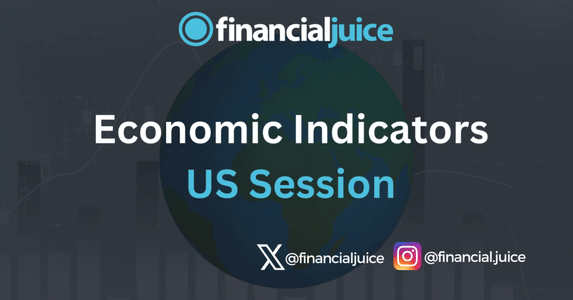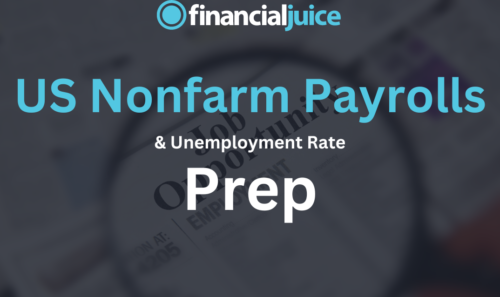
Week Ahead: Economic Indicators (US)
Hey, Traders!
For the July 15th week, here is a list of all of the major economic indicators being released during the US Session, with a brief synopsis of what they represent and what to possibly expect from the markets in reaction.
Tuesday 16th July
08:30 ET
US Retail Sales for June
US Retail Sales is a monthly measure of the total revenue generated by retail stores in the United States, reported by the Census Bureau.
It reflects consumer spending on goods such as food, clothing, electronics, and automobiles.
This indicator represents a significant portion of overall economic activity and helps gauge consumer confidence and economic health.
An increase in retail sales signals economic growth, while a decrease may indicate an economic slowdown.
What to Expect
Risks related to this release are 2-sided.
On one hand, higher retail sales can indicate higher corporate profits, which could be beneficial for stocks.
On the other hand, higher retail sales could also lead to upside inflation risks in the broader economy, feeding into the higher for longer rate narrative, which could cause weakness in stock prices.
Over the last few reports, stocks have reacted positively to a lower-than-expected retail sales number, with the Fed’s rate path more in focus than the contribution to corporate profits.
The opposite is also true, over the last few reports, a lower-than-expected number could has indicated a downside risk to inflation, which has pushed forward Fed rate cut bets, and caused strength in US stocks and weakness in the dollar.
Canadian CPI for June
The Canadian Consumer Price Index measures the average change over time in the prices paid by consumers for a basket of goods and services.
Published monthly by Statistics Canada, it includes categories such as food, housing, transportation, and clothing.
The CPI is a key indicator of inflation, reflecting the cost of living and purchasing power.
It helps guide economic policy decisions and adjust income payments, such as pensions and wages, to maintain their real value.
What to Expect
The BoC were the first fo the G7 economies to cut interest rates at their last meeting.
Ideally, the BoC still wants to see inflation coming back down to target, so they can maintain confidence and keep reducing interest rates.
Therefore, if Canadian CPI comes in lower than expected, this would be likely to cause weakness in CAD and strength in Canadian stocks.
The opposite is also true. If it comes in higher than expected, this could increase the chances that the BoC holds interest rates steady to allow themselves time to gain more confidence on inflation return back to target, which could cause weakness in Canadian stocks and strength in CAD.
Wednesday 17th July
08:30 ET
US Housing Starts for June
US Housing Starts is a monthly economic indicator that measures the number of new residential construction projects that have begun during the month.
Reported by the US Census Bureau and the Department of Housing and Urban Development (HUD), it provides insights into the health of the housing market and broader economic conditions.
An increase in housing starts suggests economic growth and strong demand for housing, while a decrease indicates potential economic slowdown and weaker demand.
What to Expect
While this release is unlikely to garner a market reaction, it is still worth paying attention to, as increased housing starts can indicate higher demand for housing, which is one of the largest investments the average US consumer will make in their lifetimes.
This makes it a good gauge of consumer sentiment, as well as a potential leading indicator to other areas of the economy, such as manufacturing, producer prices, raw materials, employment, etc, as many industries are required in the construction of homes.
10:30 ET
US Weekly EIA Crude Oil Inventories
The US Weekly EIA Crude Oil Inventories report, released every Wednesday by the Energy Information Administration, details the amount of crude oil held in storage across the United States.
This data helps assess supply and demand in the oil market and can influence oil prices.
What to Expect
An increase in inventories suggests higher supply or lower demand, which could drive down oil prices, while a decrease indicates lower supply or higher demand, which could strengthen oil prices.
Thursday 18th July
08:30 ET
US Weekly Initial & Continued Jobless Claims
US Weekly Initial Jobless Claims measures the number of people filing for unemployment benefits for the first time, indicating new layoffs. Continued Jobless Claims track those still receiving benefits, showing ongoing unemployment. Both are released weekly by the Department of Labor and help gauge labor market health.
What to Expect
A higher-than-expected jobless claims number would indicate a higher unemployment rate, which would be in-line with increased downside inflation risk.
A higher unemployment rate would be likely to push forward bets on Fed rate cuts if the deviation was large enough, which could cause strength in US stocks and weakness in the dollar.
The opposite is also true. If Jobless Claims comes in lower than expected, this could show a potentially lower unemployment rate, which could be an upside risk to inflation, which could cause a reduction in Fed rate cut bets this year, causing potential strength in the dollar and weakness in US stocks.





